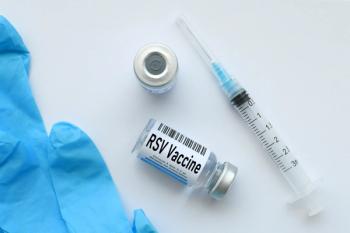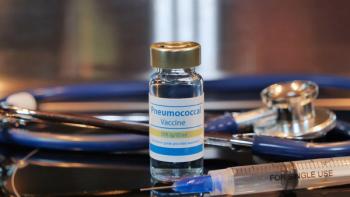Key Takeaways:
- Efficacy of SC Blinatumomab in R/R B-ALL: The study demonstrates promising efficacy of subcutaneous (SC) blinatumomab in heavily pretreated adult patients with relapsed or refractory (R/R) B-cell acute lymphocytic leukemia (B-ALL). Both dosing regimens (250 μg/500 μg and 500 μg/1000 μg) resulted in high rates of complete response (CR) or CR with partial hematological recovery (CRh) after 2 cycles, with a significant number of patients achieving measurable residual disease (MRD) negativity.
- Safety Profile and Management of Adverse Events: Serious treatment-related AEs were relatively common in patients, particularly in the lower dose group. Cytokine release syndrome and neurologic events, including immune effector cell-associated neurotoxicity syndrome, were observed, although these AEs appeared less frequently in the higher dose group. Effective management strategies, including treatment interruption and discontinuation, were implemented when necessary to address these AEs.
- Pharmacokinetics and Immunogenicity: Pharmacokinetic analysis revealed dose-dependent exposure to SC blinatumomab, with no evidence of immunogenicity observed. Both dosing regimens led to CD19-positive B-cell depletion, supporting the use of blinatumomab as treatment. Despite the small sample size, the study provides valuable insights into the safety, efficacy, and pharmacokinetics of SC blinatumomab in R/R B-ALL, warranting further investigation through randomized controlled trials for validation and broader clinical application.
Although long-term survival has improved for patients with B-cell acute lymphocytic leukemia (B-ALL), the outcomes for relapsed or refractory (R/R) B-ALL in adult patients remains relatively poor. Blinatumomab, administered via continuous intravenous infusion (cIV), has become the standard treatment regimen for those with R/R B-ALL; however, a subcutaneous (SC) formulation of blinatumomab was developed to deliver higher doses. Authors of a study published in American Journal of Hematology determined the safety, efficacy, and pharmacokinetics (PK) of SC blinatumomab in patients with heavily pretreated R/R B-ALL.
The multicenter, single-arm, open-label phase 1b trial evaluated the safety, tolerability, efficacy, and PK of SC blinatumomab as monotherapy and consisted of dose escalation and dose expansion phases. Patients were enrolled in the trial if they had been treated with primary induction therapy or at least 1 salvage therapy, were untreated first and had greater R/R relapse, or had relapsed any time after hematopoietic stem cell transplantation (HSCT). Further, patients with Philadelphia-chromosome positive (PH+) B-ALL intolerant or refractory to prior tyrosine kinase inhibitors were also eligible for trial enrollment.
Patients enrolled in the study received at least 1 cycle of SC blinatumomab, with some patients receiving up to 5 cycles. Cycles were 34 days long and consisted of a 26-day treatment period followed by an 8-day treatment-free period. A 0.3 to 1.2 mL injection of SC blinatumomab was administered once daily (QD) for the first week of cycle 1 and 3 times weekly (TIW) for the remainder of the cycle and during any potential cycles that followed.
Dose escalation consisted of 4 cohorts who received increasing doses of SC blinatumomab. The expansion phase of the trial compared 2 active doses from dose escalation, and those 2 doses were 250 μg QD per 500 μg TIW (250 μg/500 μg), or 500 μg QD per 1000 μg TIW (500 μg/1000 μg). Prior to the initiation of SC blinatumomab treatment, low-dose chemotherapy with dexamethasone or dexamethasone alone was recommended at the investigator’s discretion, but mandatory for patients who had bone marrow (BM) blasts percentage equal to or greater than 50%, or peripheral blood blast count equal to or greater than 15,000 per μg. Further, patients received premedication with 20 mg of dexamethasone within 6 hours of the first SC blinatumomab dose in cycle 1. The primary end point for the expansion phase was complete response (CR) or CR with partial hematological recovery (CRh) within the first 2 cycles.
A total of 27 patients were included in the analysis. The median number of prior therapies was 2 (range: 1-5) and included stem cell transplant (n = 8; 29.6%) and cIV blinatumomab (n = 5; 18.5%). Further, 5 patients (18.5%) were refractory to first-line therapy and the median number of SC blinatumomab cycles received was 2 (range: 1-4).
Among the 27 patients, 14 had received treatment with the 250 μg/500 μg, and the remaining 13 patients were treated with the 500 μg/1000 μg dose. After 2 cycles of SC blinatumomab, 12 of the 14 patients (85.7%) in the 250 μg/500 μg dose group achieved CR or CRh, and all 12 patients were measurable residual disease (MRD)-negative. Further, the 500 μg/1000 μg group had 12 of 13 patients (92.3%) achieved CR or CRh, of which all 13 patients were MRD-negative.
In addition, the patients who had a BM assessment at day 12 (n = 18) and day 27 (n = 24) during cycle 1 had blast-free BM (<5%). Of the patients who had central MRD real-time quantitative polymerase chain reaction (RQ-PCR) assessment, 6 of the 7 patients in the 250 μg/500 μg group and 5 of the 6 patients in the 500 μg/1000 μg group achieved MRD negativity. Further, at data cutoff, 9 of 27 patients (33.3%) with MRD-negative CR or CRh after receiving SC blinatumomab went on to receive allogeneic HSCT, of which 1 patient (3.7%) at the 500 μg/1000 μg dose developed CD19-negative relapse.
Treatment-emergent adverse events (AEs) were reported by every patient in the 250 μg/500 μg group and 12 of 13 patients (92.3%) in the 500 μg/1000 μg group. Serious treatment-related AEs were reported in 9 patients (64.3%) in the 250 μg/500 μg group and in 10 patients (76.9%) in the 500 μg/1000 μg group. Further, grade 3 and higher treatment-related events were reported in both groups, with 9 (64.3%) in the 250 μg/500 μg group and 10 (76.9%) in the 500 μg/1000 μg group. Cytokine release syndrome (CRS) and neurologic events (NEs)—including immune effector cell-associated neurotoxicity syndrome (ICANS)—were events of interest. CRS events that were grade 3 or higher occurred both dose groups; however, both NE and ICANS occurred less frequently in the 500 μg/1000 μg group compared with the 250 μg/500 μg group.
In order to manage certain AEs, treatment interruption and discontinuation were required. A total of 13 patients in the 250 μg/500 μg group had to either interrupt (n = 11, 78.6%) or discontinue (n = 2, 14.3%) SC blinatumomab treatment, of which 7 patients had CRS AEs and 6 had NE AEs. In the 500 μg/1000 μg group, treatment was interrupted in 9 patients (69.2%) due to treatment-related AEs, of which therapy was interrupted because of CRS in 5 patients, NE in 4 patients, and discontinued in 1 patient who experienced cholestasis resulting from prior liver injury. Drug interruption or discontinuation rates were overall lower in the 500 μg/1000 μg group than in the lower dose group (69.2% and 78.6%, respectively).
The median time to maximum concentration of SC blinatumomab dose ranged from 6 to 12 hours, with dose-related increase in exposure being observed over the dose range. In addition, mean apparent elimination half-life was approximately 8 to 12 hours after repeat dosing. Further, the results indicated no evidence of immunogenicity for SC blinatumomab. Both dose groups saw a CD19-positive B-cell depletion in patients with quantitative baseline data.
A limitation of the trial is the small sample size; however, the investigators note that the supporting PK evidence of dose-dependent increase exposure validates the clinical findings. In addition, the authors state that only half of the enrolled patients had MRD evaluation that was performed centrally, which could be another limitation. The investigators suggest that the study results can be influential in the space of R/R B-ALL, and that further research—particularly randomized controlled trials—should be performed to continue to explore or validate the results.
Reference
Jabbour E, Zugmaier G, Agrawal V, et al. Single agent subcutaneous blinatumomab for advanced acute lymphoblastic leukemia. Am J Hematol. 2024; 1-10. doi:10.1002/ajh.27227








































































































































































































